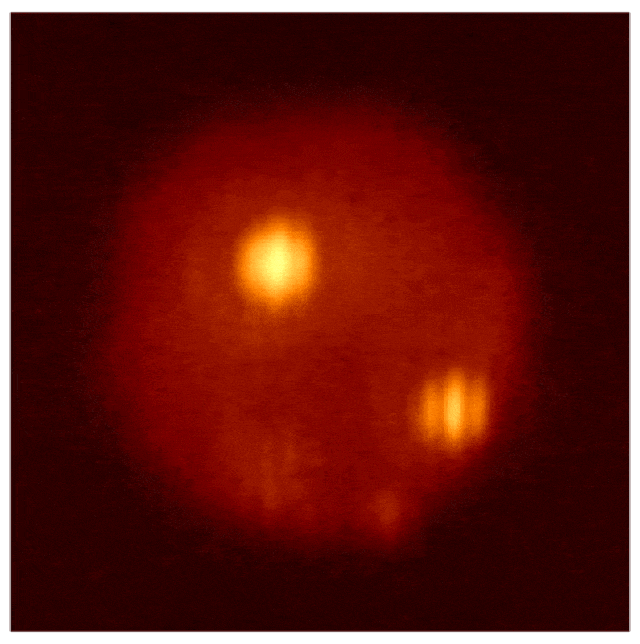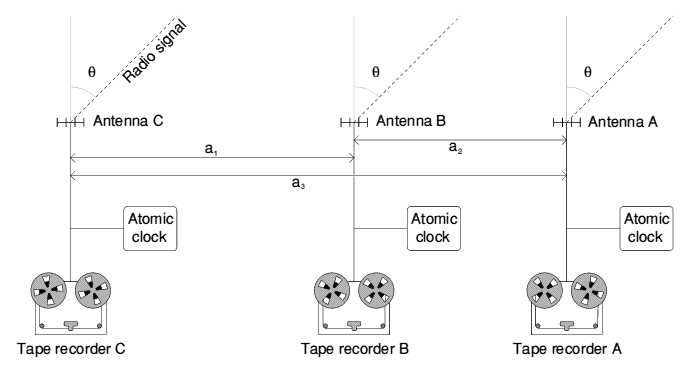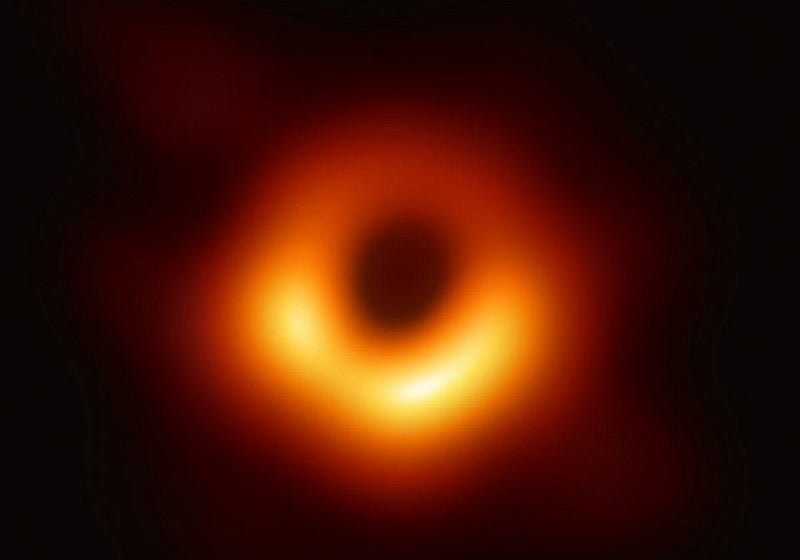Ask Ethan: How Does Very-Long-Baseline Interferometry Allow Us To Image A Black Hole?

It’s the technique, from the Event Horizon Telescope, that brought us a black hole’s image. Here’s how it works.
The Event Horizon Telescope has accomplished what no other telescope or telescope array has ever done: imaged the event horizon of a black hole directly. A team of more than 200 scientists using data from eight independent telescope facilities across five continents all joined together to achieve this monumental triumph. While there are many contributions and contributors that are well-deserving of being highlighted, there’s a fundamental physics technique that it all depended on: Very-Long-Baseline Interferometry, or VLBI. Patreon supporter Ken Blackman wants to know how that works, and how it enabled this remarkable feat, asking:
[The Event Horizon Telescope] uses VLBI. So what is interferometry and how was it employed by [the Event Horizon Telescope]? Seems like it was a key ingredient in producing the image of M87 but I have no idea how or why. Care to elucidate?
You’re on; let’s do it.

For a single telescope, everything is relatively simple. Light comes in as a series of parallel rays, all originating from the same distant source. The light strikes the telescope’s primary mirror, and gets focused to a single point. If you put an additional mirror (or set of mirrors) along the light’s path, they don’t change that story; they simply change where that light winds up converging to a point.
All of those light rays arrive to that final point at the same time, where they can then be either combined into an image or saved as raw data, to be processed into an image at a later time. That’s the ultra-basic version of a telescope: light arrives from a source, gets focused into a small region, and recorded.

But what if you don’t have a single telescope, but multiple telescopes that are networked together in some sort of array? You might think that you could just go about the problem in a similar way, and focus the light from each telescope the way you’d do it for a single-dish telescope. The light would still arrive in parallel rays; each primary mirror would still focus that light down to a single point; each telescope’s light rays arrive at the final point at the same time; all that data can then be collected and stored.
You could do that, of course. But that would only give you two independent images. You could combine them, but that would only average the data out. It would be as though you observed your target with a single telescope at two different times, and added the data together.

That doesn’t help you with your big problem, which is that you need the critical enhanced resolution that comes with using a network of telescopes linked together with VLBI. When you successfully link multiple telescopes together with the VLBI technique, it can give you an image that has the light-gathering power of the individual telescope dishes added together, but (optimally) with the resolution of the distance between the telescope dishes.
This technique has been famously used many times, not merely for imaging a black hole and not even with radio telescopes alone. In fact, perhaps the most spectacular example of VLBI was used by the Large Binocular Telescope, which has two 8-meter telescopes that are mounted together, behaving with the resolution of a ~23-meter telescope. As a result, it can resolve features that no single 8-meter dish can, like erupting volcanoes on Io while it experiences an eclipse from another of Jupiter’s moons.

The key to unlocking this type of power is that you need to be able to put your observations together at the same moments in time. The light signals that are arriving at the telescopes are arriving after slightly different light-travel-times, owing to the varying distance, at the speed of light, that it takes the signal to travel from the source object to the varying detectors/telescopes on Earth.
You must know the arrival time of the signals at the different telescope locations across the world in order to be able to combine them together into a single image. Only by combining data that corresponds to viewing the same source simultaneously can we achieve the maximum resolution that a network of telescopes is capable of offering.

The way we do this, practically, is by making use of atomic clocks. At every one of the 8 locations across the globe where the Event Horizon Telescope takes data is an atomic clock, which enables us to keep time to precisions of a few attoseconds (10^-18 s). There was also the need to install specialized computational equipment (both hardware and software) to enable the observations to be correlated and synced up between the different stations around the world.
You have to observe the same object at the same time with the same frequency, all while correcting for things like atmospheric noise with a properly-calibrated telescope. It’s a labor-intensive task that requires enormous precision. But when you get there, the payoff is astounding.

The above image might look like it has nothing to do with a black hole, but it’s actually one of the most famous images from the most powerful single array of radio telescopes out there: ALMA. ALMA stands for the Atacama Large Millimetre/Submillimetre Array, and is composed of 66 independent radio dishes that can be adjusted to be spaced apart from 150 meters all the way up to 16 kilometers.
The light-gathering power is just determined by the area of the individual dishes all added together; that doesn’t change. But the resolution it can achieve is determined by the distance between the dishes. That’s how it can achieve resolutions down to just a few milli-arc-seconds, or resolutions of 1/300,000th of a degree.

But as impressive as ALMA is, the Event Horizon Telescope goes even farther. With baselines between the stations approaching the diameter of Earth — more than 10,000 km — it can resolve objects as small as around 15 micro-arc-seconds. This incredible improvement in resolution is what enabled it to image the event horizon of the black hole (which is 42 micro-arc-seconds across) at the center of the galaxy M87.
The key in obtaining that image, and in performing these high-resolution observations in general, is to sync up every one of the telescopes with observations that are absolutely coincident in time. To make this happen is simple conceptually, but required a monumental innovation to put this into practice.

The key advance came in 1958, when scientist Roger Jennison wrote a now-famous paper: A phase sensitive interferometer technique for the measurement of the Fourier transforms of spatial brightness distributions of small angular extent. That sounds like a mouthful, but here’s how you can understand it in a straightforward fashion.
- Imagine you have three antennae (or radio telescopes) all hooked up together, and separated by particular distances.
- These antennae will receive signals from a distant source, where the relative arrival times of the different signals can be computed.
- When you mix the different signals together, they’ll interfere with one another, both due to real effects and due to errors.
- What Jennison pioneered — and what’s still used today in the form of self-calibration — was the technique to properly combine the real effects and ignore the errors.
This is known today as aperture synthesis, and the basic principle has remained the same for over 60 years.

What’s fantastic about this technique is that it can be applied to literally any wavelength range at all. Right now, the Event Horizon Telescope measures radio waves of a particular frequency, but it could theoretically operate at a frequency between three and five times as high. Since the resolution of your telescope is dependent on how many waves can fit across your telescope’s diameter (or baseline), going to higher frequencies translates into shorter wavelengths and higher resolution. We could get five times the resolution without needing to build a single new dish.
The first black hole may have just arrived a few days ago, but we’re already looking to the future. The first event horizon is really just the beginning. In addition to that, the Event Horizon Telescope should someday be able to resolve features of distant blazars and other bright radio sources, enabling us to understand them as never before. Welcome to the world of VLBI, where if you want a higher-resolution telescope, you just need to move the ones you have farther apart!
Send in your Ask Ethan questions to startswithabang at gmail dot com!
Ethan Siegel is the author of Beyond the Galaxy and Treknology. You can pre-order his third book, currently in development: the Encyclopaedia Cosmologica.




